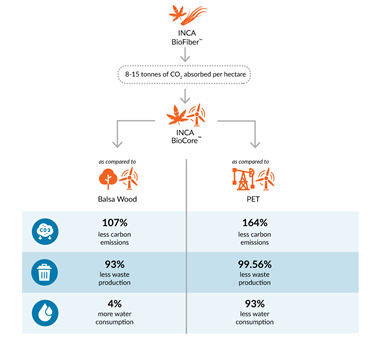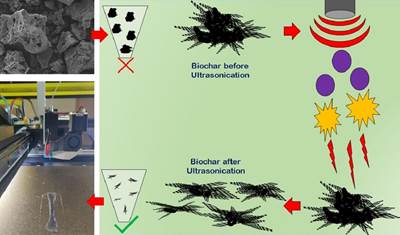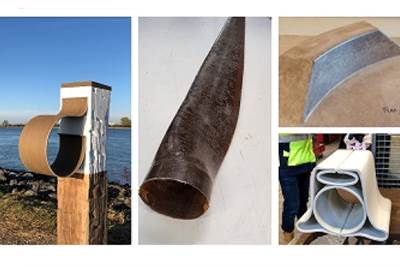INCA Renewtech awarded $10 million to invest in commercial biocomposites facility
Under Alberta’s Circular Economy Projects, INCA will construct and operate a facility for processing and manufacturing waste hemp into BioPlastics and Biocore composite materials for wide industry use.
Share
Read Next
The government of Alberta (Canada) is advancing the province’s global leadership in the circular economy by committing $58 million through Emissions Reduction Alberta (ERA) to projects across the province worth $528 million. Under the ERA’s Circular Economy Challenge, INCA Renewable Technologies (Kelowna, Canada) has been awarded a $10 million grant toward constructing and operating what is reported to be a first-of-its-kind commercial processing and manufacturing facility to process waste hemp stalk from hemp grown for protein and manufacture it into BioPlastics and BioCore — a core material that can be deployed instead of rainforest balsa wood and petroleum-based PET in wind turbine blades and marine cores.
In addition to these developments, INCA says processed fiber will be shipped to Indiana, where it will be manufactured into biocomposite prepreg and BioPanels for the automotive and RV industries (see “INCA Renewtech to build advanced biocomposites manufacturing facility in Alberta, Canada”). INCA currently has commercialization partnerships with Gurit (Wattwil, Switzerland and Bristol, R.I., U.S.), Toyota North America (Plano, Texas, U.S.) and Genesis Products (Elkhart, Ind., U.S.) and its customer Winnebago Industries (Forest City, Iowa, U.S.). Joint development agreements with Canadian- and U..S-based polymer producers are also under finalization.
“This funding will enable INCA Renewtech to significantly accelerate construction of our state-of-the-art hemp processing and composites manufacturing factory,” David Saltman, chairman and CEO, INCA Renewtech, says. “We will purchase waste straw from farmers currently growing hemp for plant-based protein and transform this renewable resource into advanced biocomposites for the automotive, marine, wind energy and consumer plastics industries.”
The Circular Economy Challenge projects support waste reduction, material and feedstock substitution, value recovery and reduction of the lifecycle environmental footprint of materials and products — producing high-quality fertilizer for farmers, recycling asphalt from roof shingles, sequestering carbon in concrete and novel plastics recycling are some examples of the technology solutions receiving funding. Ultimately, these technology solutions can reduce the impacts of material production, processing and disposal. The innovations invested in will support industry competitiveness, new venture creation and economic diversification.
If successful, the projects will reportedly result in cumulative greenhouse gas (GHG) reductions of up to four million tonnes by 2050 — equal to offsetting the GHG footprint of 1 million homes. Circular Economy Challenge funding is expected to create 1,835 person-year jobs in Alberta and have a $350 million GDP impact in the province by 2025.
The investment aligns with provincial initiatives including the proposed Extended Producer Responsibility (EPR) approach, the agricultural plastics recycling initiative and the Natural Gas Vision and Strategy’s goal to establish Alberta as a center of excellence for plastics diversion and recycling
“A more sustainable, diversified provincial economy requires using our resources more wisely, we need to think about waste as a resource rather than a cost,” Justin Riemer, CEO, Emissions Reduction Alberta, adds. “This investment in converting waste into other uses is going to make a real difference.”
Projects were selected through ERA’s competitive review process. A team of experts in science, engineering, business development, commercialization, financing and GHG quantification conducted an independent, rigorous, transparent review overseen by a Fairness Monitor.
All ERA funding recipients are required to produce a final outcomes report that is shared publicly for the broader benefit of Alberta, as well as other funding proposals. Funding recipients will be required to report on project outcomes, achievements and lessons learned including GHG reductions, job creation and other environmental, economic and social benefits.
All funding is sourced from the province’s Technology Innovation and Emissions Reduction (TIER) fund.
Related Content
Aerospace prepregs with braided reinforcement demonstrate improved production rates, cost
A recent time study compares the layup of a wing spar using prepreg with A&P’s TX-45 continuous braided reinforcement versus traditional twill woven prepreg.
Read MorePlant tour: Airbus, Illescas, Spain
Airbus’ Illescas facility, featuring highly automated composites processes for the A350 lower wing cover and one-piece Section 19 fuselage barrels, works toward production ramp-ups and next-generation aircraft.
Read MorePlant tour: Teijin Carbon America Inc., Greenwood, S.C., U.S.
In 2018, Teijin broke ground on a facility that is reportedly the largest capacity carbon fiber line currently in existence. The line has been fully functional for nearly two years and has plenty of room for expansion.
Read MorePrepreg compression molding supports higher-rate propeller manufacturing
To meet increasing UAV market demands, Mejzlik Propellers has added a higher-rate compression molding line to its custom CFRP propeller capabilities.
Read MoreRead Next
New research developments identify new methods for bio-derived carbon filler reinforcement for biocomposites
Sustainable methodologies employed by researchers from Tuskegee University enable the synthesis of carbon from biomass-based precursor materials, and its effective reinforcement in composites.
Read MoreSeaBioComp project develops biocomposite demonstrator products for marine applications
Prototype products explore thermoplastic polymers, natural fibers and 3D printing technologies to effectively reduce the use of fossil-based materials in the marine sector.
Read MoreScaling up, optimizing the flax fiber composite camper
Greenlander’s Sherpa RV cab, which is largely constructed from flax fiber/bio-epoxy sandwich panels, nears commercial production readiness and next-generation scale-up.
Read More




























